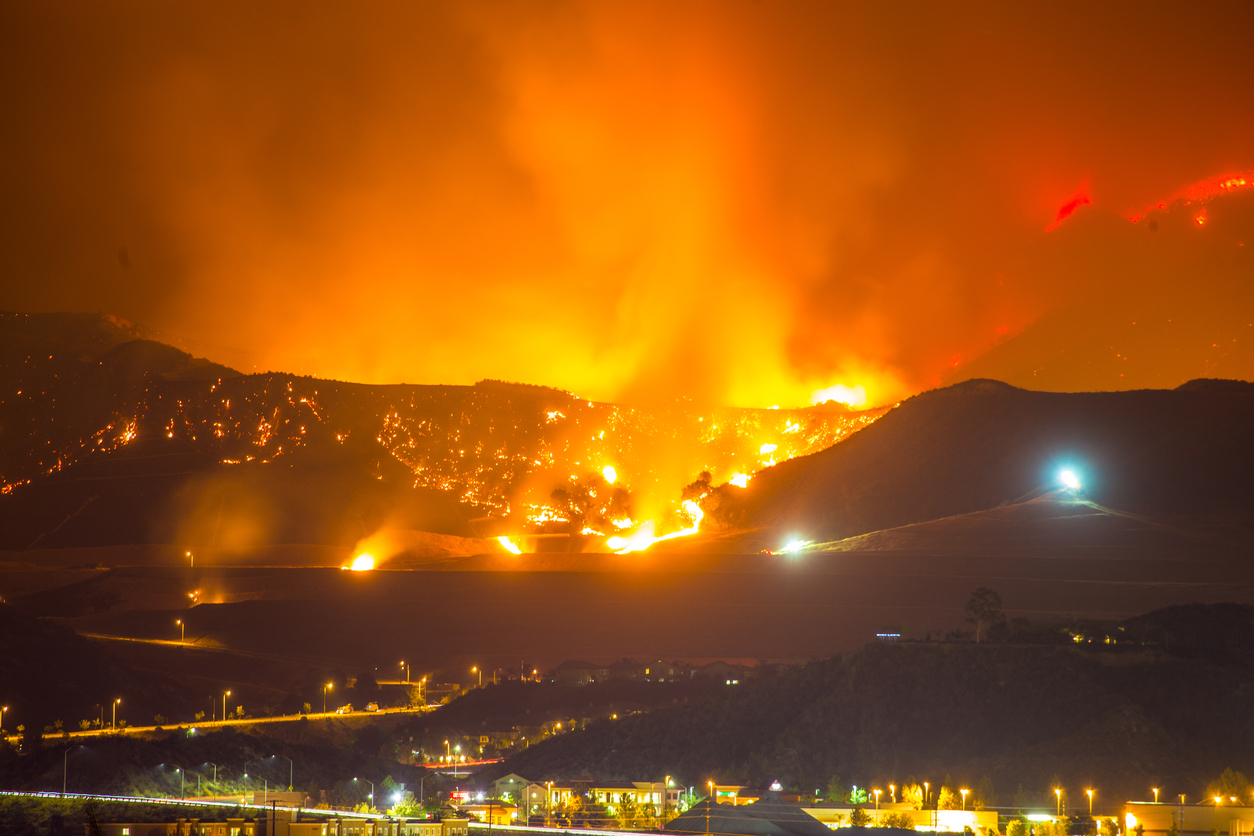“Fire” is a loaded word. Yell it and people will immediately exit a building; property owners will worry about the future of their brick-and-mortar investment; and insurers will begin forecasting for claims they will see on the property and the resulting adjustments they will need to make to premiums.
Multiply this scenario by a factor of several hundred in a state like California, which leads the nation in wildfires, and it is quickly apparent why having comprehensive insight into the risk of wildfires is imperative to mitigating damages and accelerating restoration efforts.
The power of having advanced knowledge of risk is only amplified when it is paired with insight into the mitigation efforts that are becoming increasingly necessary — and even required — throughout the state.
To encourage resilience and mitigation, California is the first state to implement industry-changing legislation. The California Department of Insurance (CDI) will require insurers to offer discounts to property owners who implement wildfire safety and mitigation measures outlined in the state’s Safer From Wildfires guidelines.
However, providing property insurance in an environment where wildfire season is now a year-round affair is a challenge. In the past three years alone, CoreLogic data shows that wildfires have destroyed more than 25,000 homes across the United States, totaling up to $20 billion in damage.
A Solution for California Carriers: Wildfire Mitigation Score
To simplify the process of creating new rating systems and policy pricing structures that adhere to the CDI’s requirements for compliance, CoreLogic established the Wildfire Mitigation Score – a comprehensive risk scoring system that evaluates a property based on the wildfire mitigation actions taken by owners. In the report, we cover:
- How the Wildfire Mitigation Score simplifies the process of establishing CDI-compliant rating systems;
- The data and technology behind the Wildfire Mitigation Score that ensures its accuracy and enables greater risk differentiation;
- How insurance carriers can provide policies that better protect both their own business and their policyholders.
California Still Has the Highest Risk for Wildfire Damage
About 40 million people called the Golden State home as of the 2020 census, and as the nation’s most populous, it also has the largest number of structures. As such, California remains the state most at risk for property damage from wildfires, with CoreLogic’s 2022 Wildfire Risk Report estimating that more than 1.2 million single-family homes are vulnerable.
A prolonged drought and high winds are largely to blame for California’s wildfires over the past six years. The November 2018 Camp Fire in Butte County was even more catastrophic than the Tubbs Fire, burning more than 150,000 acres and impacting 18,800 structures, making it the most destructive in state history. In 2021, the Dixie Fire in Northern California burned across five counties for several months, ultimately charring almost 1 million acres and damaging or destroying more than 1,300 structures.
The year 2022 saw nearly 7,700 wildfires spark in California, according to CAL FIRE data, with new ones igniting virtually every day. Last year, California wildfires consumed about 364,000 acres, damaging or destroying almost 900 structures.
The atmospheric river and bomb cyclone that hit areas of the West Coast starting in December 2022 and continuing into January 2023 may help lessen wildfire-related damages in California in the coming year. However, intense and prolonged amounts of rain after a lengthy drought create other risks for property owners, including flooding and mudslides. Structures that are situated downslope from past wildfire burn scars are particularly vulnerable to mudslides and debris.
How Can Property Owners Mitigate their Wildfire Risk?
The acres that burn aren’t only damaging to structures. They also damaging to communities, families and lives. To help stop fanning the flames of wildfire risk, there are 12 steps that homeowners can take to harden their homes, according to California’s Wildfire and Forest Resilience Action Plan.
- Joining an NFPA Firewise community
- Living in a CA BOF FRRC community
- Remove vegetation and debris from underdecks
- Clearing Zone 0 (0-5ft) of both living and combustible material
- Having no combustible attachments
- Removing all combustible structures within 30 feet of the primary building
- Complying with PRC 4291 or local ordinance inspection
- Having a Class A Fire-Rated Roof
- Enclosing eaves
- Installing ember or flame-resistant vents
- Installing dual pane windows or functional shutters
- Maintaining a minimum of six inches of noncombustible clearance from the ground up around the perimeter of the home
However, while homeowners who take these steps may be entitled to a reduction in their insurance premiums, home hardening is not a guarantee that homeowners can avoid reconstruction costs in the event of a wildfire.
Reconstruction Costs Are Rising
Homeowners who suffer wildfire damage often face a long and expensive road to recovery, and recent inflation is bound to add even more headaches.
The cost of reconstruction materials such as slab doors, asphalt shingles and felt have been increasing since the beginning of the year in the U.S. Notably, the cost of PVC piping rose by almost 50% since January 2022. A shortage of skilled construction laborers is also driving up reconstruction bills, with wages up by as much as 2.6% for some industry professionals between January and August of 2022.
Higher labor and materials prices have led to rapid growth in overall U.S. home reconstruction costs, which increased by an average of 4.1% from the second to third quarter of this year.
CoreLogic’s proprietary risk-modeling capabilities and teams of hazard experts and data scientists provide highly accurate insights into current and future wildfire risks, as well as the best strategies for mitigating them. Besides the 2022 Wildfire Risk Report, the September 2022 Webinar “Fire on the Horizon” offers additional information and commentary on wildfire trends. To keep up to date with ongoing coverage of natural catastrophes and their impact on the housing ecosystem, visit CoreLogic’s Hazard HQ blog.













